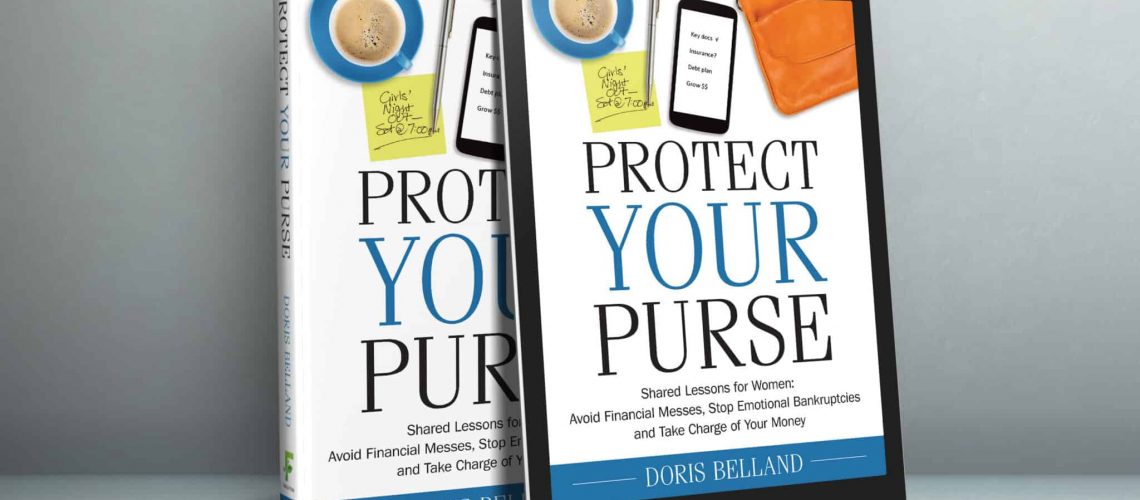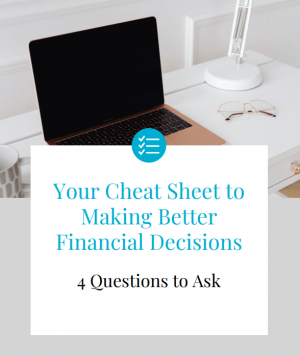My new book Protect Your Purse, Shared Lessons for Women: Avoid Financial Messes, Stop Emotional Bankruptcies and Take Charge of Your Money has just been published!
Here’s the funny thing about that:
Five years ago, this blog started as a book project, thanks to my husband’s insistence that I share my financial lessons and my story with the world. I had no intention of continuing to write a blog beyond publishing the book.
I was simply interested in exploring all the difficult financial lessons I learned courtesy of young widowhood and staggering debt.
My plan was to interview other women – divorcees and widows – to get their advice, write a few blog posts about it, publish a book two years later, and that would be the end of it.
So how did I do in terms of estimation?
Terribly:
- It took nearly five years, not two, to research, write and publish my book.
- I originally predicted that I would write a handful of blog posts; I have written more than one hundred.
- I figured I’d run out of stuff to write about after a couple of months. Yeah – no. My list of blog topics keeps getting longer.
- I assumed only my family and closest friends would read my posts. Dead wrong.
- The book was intended to be a once-and-done deal and then I would go back to being a real estate investor. Instead, the work on my book has inspired me to change course professionally.
Something meant to record a change in life ended up causing another, equally big change.
I still have my real estate portfolio, but the focus of my days has changed by 180 degrees.
It’s funny how life works.
Today, I want to share the #1 lesson that I learned as I dealt with the loss of my first husband and the resulting debt that capped out just under $400,000.
That’s a sobering number, isn’t it? $400,000!
Imagine that tomorrow, you wake up and you realize the following:
- Omg, I owe nearly $400,000.
- The source of my income has just died.
- I have enough earning potential for maybe two years at most. After that, I have no clear financial options.
That’s what I faced at the age of thirty-two.
In my book, you can read how this came about, but for today I want to focus on the lesson.
Very simply it’s this: Build thinking time into your life each and every month.
Take the time to consider where you’re at, how you’re making money, whether you’re on track to reach your most cherished goals, and whether you’re financially protected.
Thinking time.
Time to ask difficult questions.
Not time to check Instagram or send a text or deal with the kids while you’re trying to concentrate.
Thinking time. Time alone.
In my twenties, I didn’t do that, even though I was trained as an academic to think and ask probing questions.
I paid a heavy price as a result.
I succeeded in paying off the debt in two years, after working like a dog to do it.
Then it took me nearly ten years to rebuild my life.
I spent my twenties in and out of oncology wards and I spent my thirties starting over from scratch.
Not fun.
While the hardship was not entirely avoidable, some of the trauma that I faced was.
In my book, I talk about focusing so much on the trees in your life that you totally miss the forest.
Every once in a while, we need to step back and ask some basic questions, such as,
- Am I even in the right forest?
- Am I really making the best choices for my life?
- Am I protected financially?
- Am I happy?
- Am I making the best use of my talents and gifts?”
Doing it once is great and it may help you to sort out one area of your life, but you can’t tackle all the biggies in one moment of reflection.
This is an ongoing process, and it’s why I encourage you to build non-negotiable thinking time into your calendar.
By doing this one thing, you will help minimize moments of regret, and you might even prevent tragic consequences of the type that I faced.
It’s all about making conscious choices for your life rather than simply reacting to what life throws your way.
For more on this, grab a copy of my book. It’s available on Amazon or you can order it from your local bookstore.
If you have a story to tell, too, I’d love to hear it. Chime in below.
Want a proven process to help you make savvy financial decisions that are in your highest, best interests every time?
Grab your copy of my FREE Cheat Sheet.
In it, you’ll discover the four key questions to ask yourself, in order, to gain total clarity on the right financial decisions for you.
This process works for all decisions, big and small.
Make indecision, second-guessing, and analysis-paralysis a thing of the past.



One Response